Frida Kahlo Facts – Learn Everything About This Iconic Painter
When delving into the captivating world of Frida Kahlo, it becomes evident that her life and art are brimming with extraordinary details that continue to captivate admirers worldwide. Exploring the facts about Frida Kahlo provides an immersive experience into the depths of her remarkable existence and creative genius. From her unique personal style and enduring resilience, to her indelible impact on the art world, there are countless Frida Kahlo fun facts that shed light on what she was truly famous for. Join us on a journey to unravel the enigmatic layers of this iconic artist and unearth the fascinating facets that shaped her unparalleled legacy. This article answers common questions such as: “who was Frida Kahlo?”, “what was Frida Kahlo famous for?”, “what was Frida Kahlo’s nickname?”, “how tall was Frida Kahlo?”, “when did Frida Kahlo die?”, “where was Frida Kahlo born?”, “when was Frida Kahlo born?”, and so much more. Discover everything you need to know about this wildly famous and impressive artist below!
Frida Kahlo Facts: Who Was Frida Kahlo?
| Date of Birth | 6 July 1907 |
| Date of Death | 4 October 1954 |
| Country of Birth | Mexico |
| Art Movements | Surrealism, Expressionism, and Symbolism |
| Genre/Style | Ex-voto and Naïve style |
| Mediums Used | Oil painting and collage |
| Dominant Themes | Isolation, death, Mexican heritage, miscarriage, love, and self |
Frida Kahlo, a revered Mexican artist of the 20th century, remains an enduring symbol of passion, pain, and resilience. Through her striking self-portraits and vibrant artworks, Kahlo defied societal norms and fearlessly expressed her innermost emotions, often exploring themes of identity, love, and physical suffering.
Her artistry served as a profound reflection of her tumultuous life, marked by a tragic accident that left her in constant physical agony.
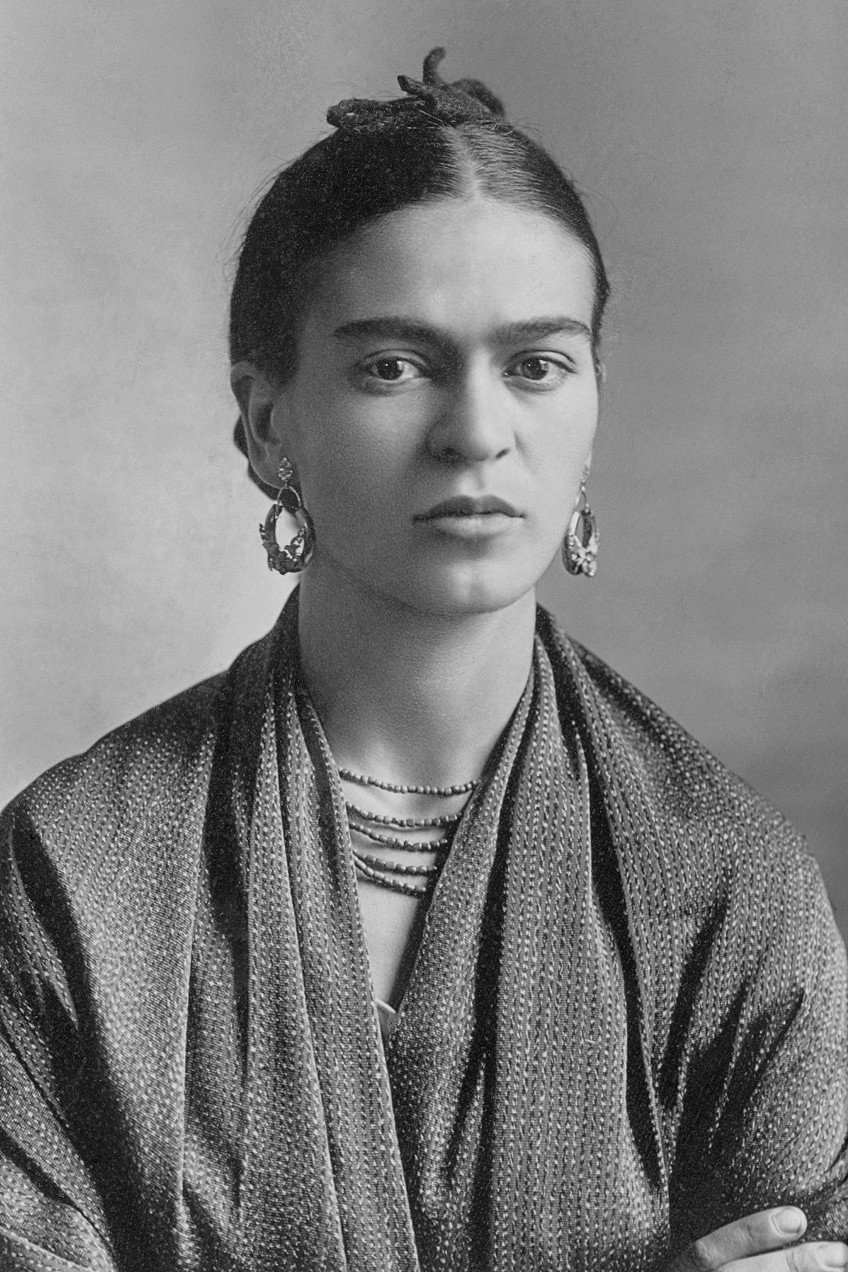
With her unapologetic depiction of raw emotions, Kahlo’s paintings transcend time, inviting viewers to delve into the depths of her complex psyche and experience a profound connection to the universal human experience. Frida Kahlo’s artistic brilliance and unwavering spirit continue to inspire generations, solidifying her rightful place among the most influential and celebrated artists in history.
Facts About Frida Kahlo’s Childhood: Unveiling the Influences Behind a Remarkable Artist
Frida Kahlo’s childhood laid the foundation for her extraordinary artistic journey, shaping her unique perspective and indomitable spirit. Exploring the lesser-known aspects of her early years provides valuable insights into the influences that molded her into the iconic artist she became. Here are eight intriguing facts about Frida Kahlo’s childhood, each accompanied by a brief exploration of its significance.
Where Was Frida Kahlo Born?
From her birthplace in Coyoacán, Mexico City, Frida Kahlo developed a deep connection to her Mexican heritage and culture. This rich background would heavily influence her artistic style and subject matter, infusing her works with vibrant colors and symbolic references to Mexican folklore.

When Was Frida Kahlo Born?
Frida Kahlo was born on July 6, 1907. Her birth occurred during a period of significant cultural and political shifts in Mexico. It was a time when the country was undergoing a profound transformation, transitioning from the authoritarian rule of Porfirio Díaz (1830 – 1915) to a period of social and political upheaval known as the Mexican Revolution.
This tumultuous backdrop greatly influenced Kahlo’s worldview, inspiring her to explore themes of identity, social justice, and national pride in her artwork.
Contracted Polio
Frida Kahlo was only six years old when she contracted polio. This sickness gave her a limp and permanently altered her bodily capabilities. This early encounter with illness and disability would shape her resilience and later manifest in her art as she explored themes of pain, suffering, and the fragility of the human body.

Attended the National Preparatory School
Frida Kahlo attended the prestigious National Preparatory School, where she developed a passion for literature, philosophy, and politics. The intellectual environment of the school would influence her artistic pursuits and contribute to her desire to challenge societal norms and explore profound existential questions through her art.
Planned to Study Medicine
Initially, Kahlo aspired to study medicine, fueling her fascination with the human body and anatomy. This interest in the intricacies of the human form would later become a prominent theme in her artwork, as she depicted herself and others in raw and unflinching ways, often emphasizing physical pain and vulnerability.

Encouraged by Her Father
Frida Kahlo’s father, Guillermo Kahlo (1871 – 1941), was a photographer and played a significant role in supporting and encouraging her artistic talents. He provided her with art supplies and a space to create, fostering her early artistic development and instilling in her the confidence to pursue a career in art.
Frida Kahlo Fun Fact: Joined a Gang of Intellectuals
During her youth, Kahlo became a part of a group known as the Cachuchas, a gang of intellectuals who challenged societal conventions and explored radical ideas. This association exposed her to a diverse range of perspectives and contributed to her independent and rebellious nature, which she later expressed through her art.
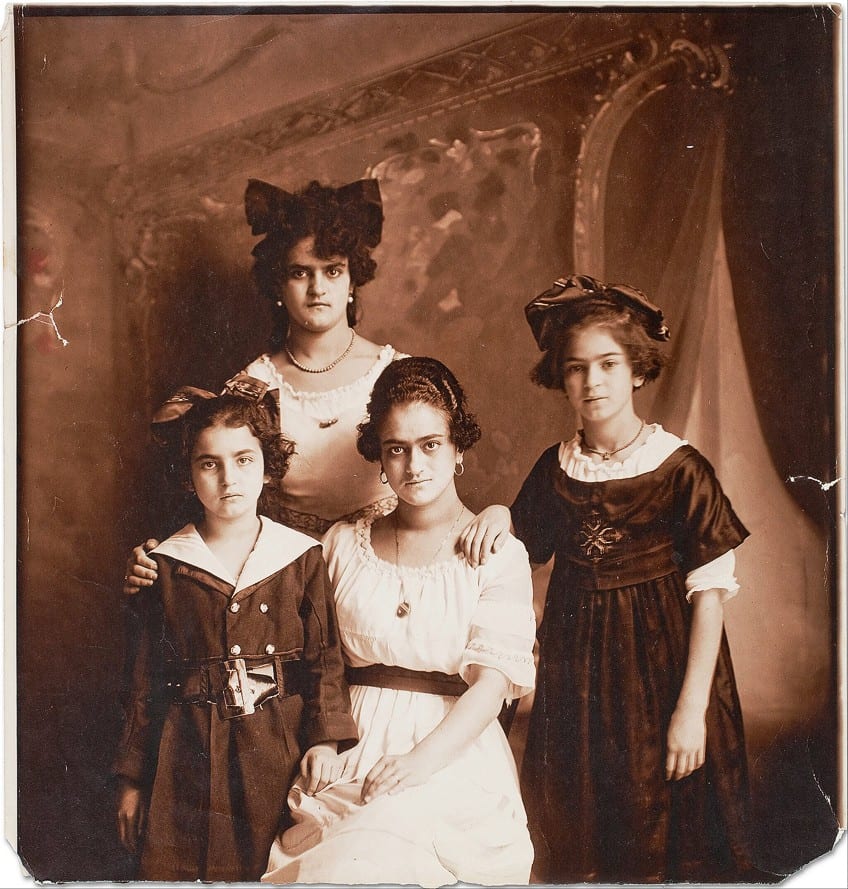
Experienced a Devastating Bus Accident
At the age of 18, Kahlo endured a horrendous bus accident that resulted in agonizing injuries, including a shattered spine and pelvis. The physical and emotional pain she endured during her long recovery period profoundly influenced her artistic style, as she began to paint self-portraits as a means of self-expression and catharsis.
Frida Kahlo Facts: Her Family
Frida Kahlo’s family played a significant role in shaping her identity, artistic sensibilities, and worldview. Exploring the dynamics and experiences of her family members provides valuable insights into the influences that fueled her artistic journey. Here are four intriguing facts about Frida Kahlo’s family, each accompanied by a brief exploration of its significance.
Her Father Was a Photographer
Frida Kahlo’s father, Guillermo Kahlo, was a German-Hungarian immigrant and an accomplished photographer. His artistic profession exposed Frida to the world of visual arts from an early age, fostering her curiosity and nurturing her creativity.
Guillermo’s influence is evident in Frida’s keen eye for composition and her deliberate use of symbolism and storytelling in her artworks.
Her Mother Was of Indigenous and Spanish Descent
Frida’s mother, Matilde Calderón y González (1874 – 1932), was of Indigenous and Spanish heritage. Her mixed heritage deeply influenced Frida’s own sense of identity and played a pivotal role in her exploration of cultural themes and symbolism in her art. Frida’s connection to her Indigenous roots is often reflected in her choice of traditional Mexican clothing, jewelry, and motifs, which she proudly incorporated into her self-portraits.

Her Sister Was Her Lifelong Confidante
Frida had two sisters, but it was her younger sister Cristina Kahlo (1908 – 1964) who shared a particularly close bond with her. Cristina became Frida’s lifelong confidante, providing emotional support and companionship throughout her tumultuous life.
Frida’s deep connection with Cristina is evident in several of her artworks, where Cristina appears as a comforting presence and a symbol of sisterly love.
Frida Had a Complex Connection with Her Father
While Guillermo Kahlo played a significant role in nurturing Frida’s artistic talents, their relationship was complex. Guillermo’s strict demeanor and conservative views clashed with Frida’s rebellious nature and unconventional choices. Despite their differences, Frida held a deep respect and admiration for her father, and his presence loomed large in her life and artistic expression.
Facts About Frida Kahlo’s Relationship With Diego Rivera: A Complex Love Story That Shaped Art History
The passionate and tumultuous relationship between Frida Kahlo and Diego Rivera (1886 – 1957) has fascinated art enthusiasts and historians for decades. Their bond was marked by love, artistic collaboration, infidelity, and profound emotional connection. Exploring the intricate details of their relationship unveils the complexities that shaped their individual artistic journeys and left an indelible mark on art history. Here are five captivating facts about Frida Kahlo’s relationship with Diego Rivera, each accompanied by a detailed exploration of its significance.
A Love Story That Defied Convention
Frida Kahlo and Diego Rivera’s relationship defied the societal norms and conventions of their time. With a significant age difference and stark physical contrasts, their union challenged traditional expectations of beauty and companionship.
Their love saga was proof of the strength of connection beyond superficial appearances, emphasizing the depth of emotional understanding and shared artistic passions.
A Profound Influence on Each Other’s Art
Frida and Diego’s relationship had a profound impact on their respective artistic styles. They influenced and inspired one another, leading to an artistic symbiosis that is evident in their works. Diego’s large-scale murals and political themes influenced Frida’s exploration of social justice and Mexican identity, while Frida’s introspective self-portraits and symbolic imagery had a lasting influence on Diego’s own artistic expression.
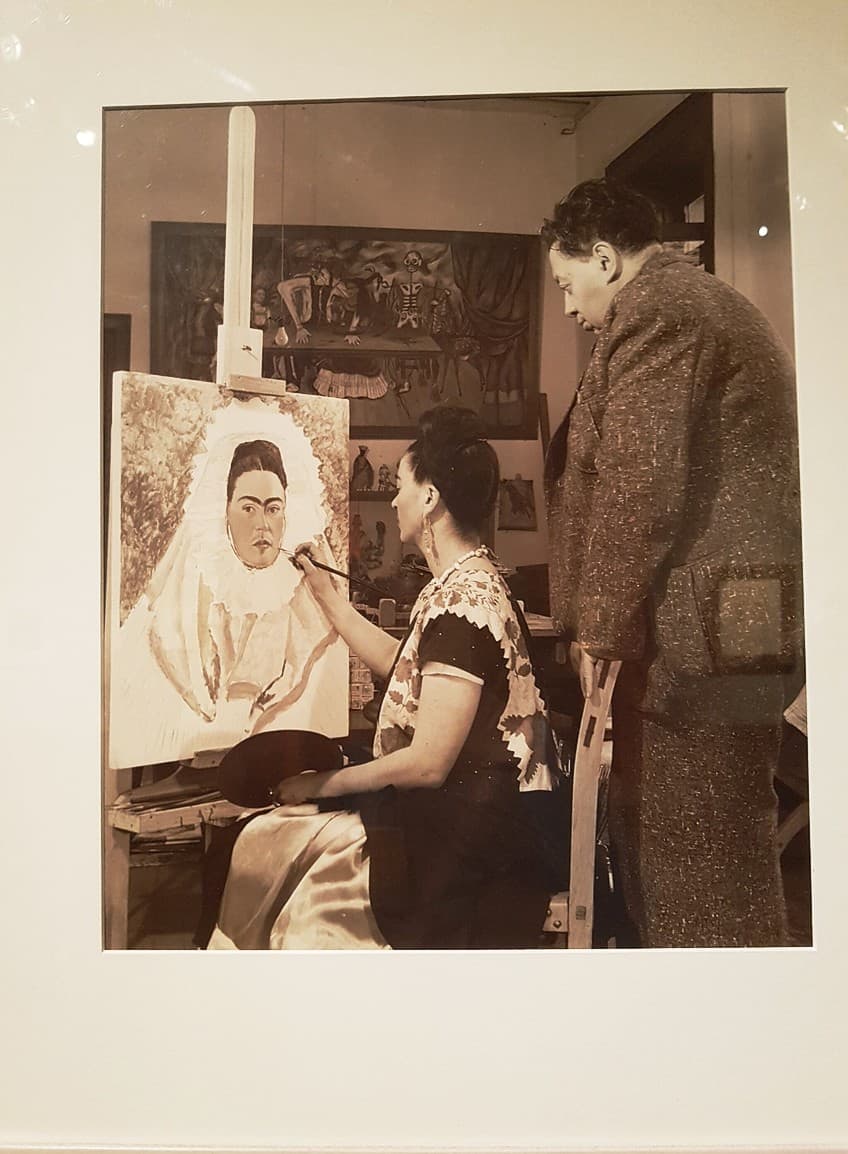
A Stormy Marriage With Infidelity
Frida and Diego’s marriage was far from conventional, marked by infidelity on both sides. Their extramarital affairs, including Diego’s highly publicized affair with Frida’s younger sister Cristina, added layers of complexity and emotional turmoil to their relationship.
Despite these challenges, their love for each other endured, and they often reconciled, recognizing the profound bond they shared.
The Symbolic Presence of Diego in Frida’s Art
Diego Rivera’s presence is deeply embedded in Frida Kahlo’s art. He frequently appears in her paintings as a subject, symbolizing their deep emotional connection, as well as their complex dynamics. His depiction serves as a testament to the central role he played in Frida’s life and artistic journey, illustrating the intertwining of their personal and creative worlds.

Separate Residences to Foster Independence
As a means to nurture their individuality and creative independence, Frida and Diego maintained separate residences during their marriage. This arrangement allowed them the space to explore their own artistic visions and personal growth.
It also provided them with a sense of freedom within the confines of their complex relationship, enabling them to cultivate their respective identities as artists.
Artistic Collaborations and Exhibitions
Frida Kahlo and Diego Rivera frequently collaborated on artistic projects and exhibitions. They often showcased their works together, sharing a creative dialogue and amplifying the impact of their art. Their joint exhibitions allowed viewers to witness the visual conversation between their distinct styles, highlighting their shared themes and artistic visions. These collaborations further solidified their status as a formidable artistic duo.
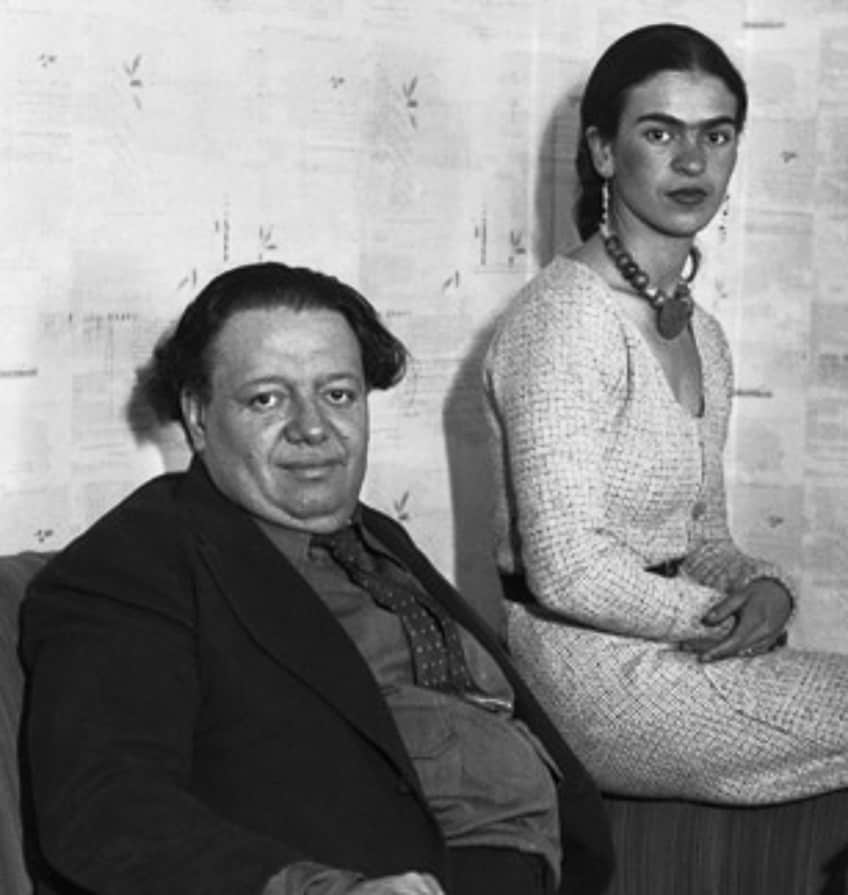
Diego’s Support and Promotion of Frida’s Art
Diego Rivera played a vital role in promoting and supporting Frida Kahlo’s artistic career. He recognized her talent and advocated for her work, helping her gain recognition and opportunities in the art world. Diego’s endorsement provided Frida with a platform to showcase her art and establish her own artistic identity, ultimately paving the way for her enduring legacy.
Shared Political Activism
Frida and Diego shared a deep commitment to political activism, particularly in their support of left-wing causes and the Mexican Revolution. Their art became a powerful tool for political expression, reflecting their dedication to social justice and advocacy for the rights of the working class. Their shared activism further strengthened the bond between them, intertwining their personal and political aspirations.
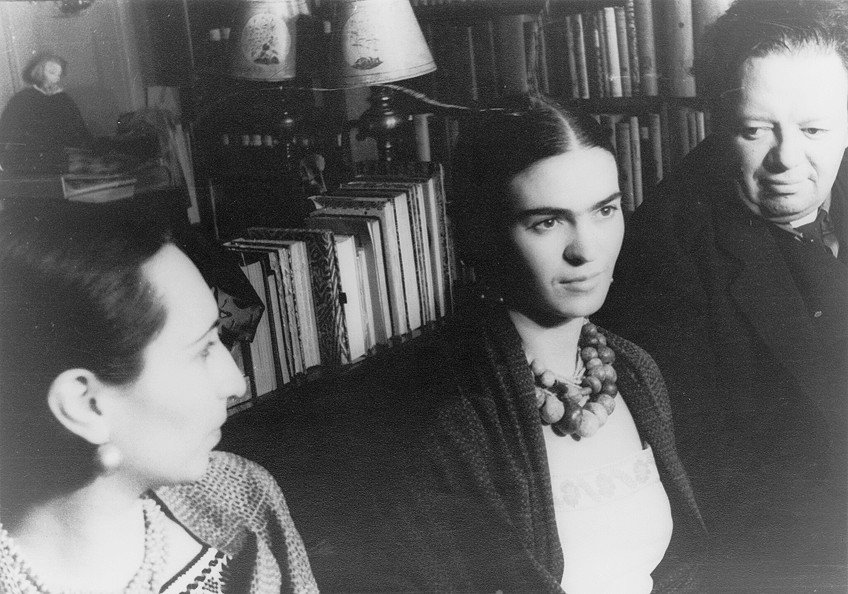
Separations and Reunions
Frida and Diego’s relationship was characterized by periods of separation and subsequent reunions. They faced numerous challenges and often lived apart for extended periods. These separations allowed them to explore their individual identities and pursue their respective artistic endeavors.
Despite the distance, they maintained a profound connection that led to passionate reunions and reaffirmed their bond.
Facts About Frida Kahlo’s Health Issues: Exploring the Resilience Behind the Artistry
Frida Kahlo’s art was greatly entangled with her bodily and emotional misery, as she faced a myriad of health issues throughout her life. Her paintings became a powerful medium for self-expression and a means of coping with the physical and psychological challenges she endured. Exploring the facts about Frida Kahlo’s health issues provides valuable insights into the resilience and determination that fueled her artistic journey. Here are five compelling facts about Frida Kahlo’s health, each accompanied by a detailed exploration of its significance.
Endometriosis and Gynecological Challenges
Frida Kahlo’s health struggles extended beyond physical injuries. She also battled with endometriosis, a painful condition that affects the reproductive system. Enduring chronic pelvic pain, infertility, and multiple surgeries related to her gynecological health, Frida courageously depicted these deeply personal experiences in her art, shedding light on the emotional and physical toll they took on her.

Mental Health Struggles and Emotional Turmoil
Frida Kahlo’s health issues were not limited to the physical realm; she also grappled with significant mental health challenges. Throughout her life, she experienced depression, anxiety, and feelings of isolation. Her art became a therapeutic outlet, allowing her to process and communicate her complex emotions, providing a glimpse into the depths of her inner turmoil.
Lifelong Pain and Artistic Resilience
Despite enduring a lifetime of physical and emotional pain, Frida Kahlo’s resilience and determination shone through in her art. She channeled her suffering into creativity, using painting as a medium to transcend her physical limitations and express her unique perspective. Frida’s art became a testament to the human spirit’s ability to triumph over adversity, inspiring generations to find beauty and strength in the face of profound challenges.
When Did Frida Kahlo Die?
Frida Kahlo’s life came to an end on July 13, 1954. Her untimely demise was a result of complications stemming from pulmonary embolism, a condition caused by a blockage in the pulmonary arteries, restricting blood flow to the lungs. Frida had struggled with declining health throughout her life, enduring the consequences of a bus accident, multiple surgeries, and ongoing physical and emotional pain. Despite her challenges, Frida continued to create art until the end, leaving behind a rich and profound artistic legacy.
Her death marked a profound loss to the art world, but her indomitable spirit and artistic vision continue to inspire and captivate audiences to this day.
Frida Kahlo Facts About Her Artistic Style: What Was Frida Kahlo Famous For?
Frida Kahlo’s artistic style is instantly recognizable, characterized by its boldness, symbolism, and raw emotional power. Her distinctive visual language captivates viewers, inviting them into a world that blends reality and imagination, pain and beauty. Exploring the facts about Frida Kahlo’s artistic style provides valuable insights into the techniques and themes that shaped her iconic body of work. Here are five compelling facts about Frida Kahlo’s artistic style, each accompanied by a detailed exploration of its significance.
Self-Portraits as a Means of Self-Expression
Frida Kahlo’s extensive collection of self-portraits is a hallmark of her artistic style. She used self-portraiture as a powerful tool for self-expression, allowing her to explore her own identity, experiences, and emotions. By painting herself in various states of vulnerability and strength, Frida unveiled the complexities of her inner world, inviting viewers to engage with her deeply personal narratives.

Vivid Colors and Symbolic Imagery
Frida Kahlo’s artwork is characterized by its vibrant color palette, which bursts with life and energy. She utilized bold hues to evoke emotions, draw attention, and create visual impact. Additionally, Frida incorporated rich symbolism in her paintings, often referencing Mexican culture, mythology, and personal experiences.
These symbolic elements added layers of meaning and allowed her to communicate universal themes through a deeply personal lens.
Surrealistic and Dreamlike Elements
While Frida Kahlo is often associated with surrealism, her work defies strict categorization. She incorporated surrealistic elements and dreamlike imagery to blur the boundaries between reality and the subconscious. Frida’s exploration of the inner psyche and the realms of dreams and fantasies added an ethereal quality to her art, inviting viewers to enter a realm that transcended the constraints of the physical world.
Pain and Vulnerability As Themes
Frida Kahlo’s art unflinchingly explores themes of pain, suffering, and vulnerability. Her physical and emotional challenges served as powerful sources of inspiration, with her artwork serving as a medium for catharsis and healing.
Frida’s depictions of physical scars, medical devices, and the raw portrayal of her own experiences resonate with viewers, evoking empathy and inviting a deeper understanding of the human condition.
Fusion of Traditional Mexican and European Influences
Frida Kahlo’s artistic style seamlessly blends traditional Mexican elements with European influences. She drew inspiration from Mexican folk art, including vibrant textiles, jewelry, and indigenous symbolism. At the same time, she incorporated techniques and influences from European art movements such as Renaissance and Baroque. This fusion of cultural aesthetics allowed Frida to create a distinct visual language that celebrated her Mexican heritage while engaging with broader artistic traditions.
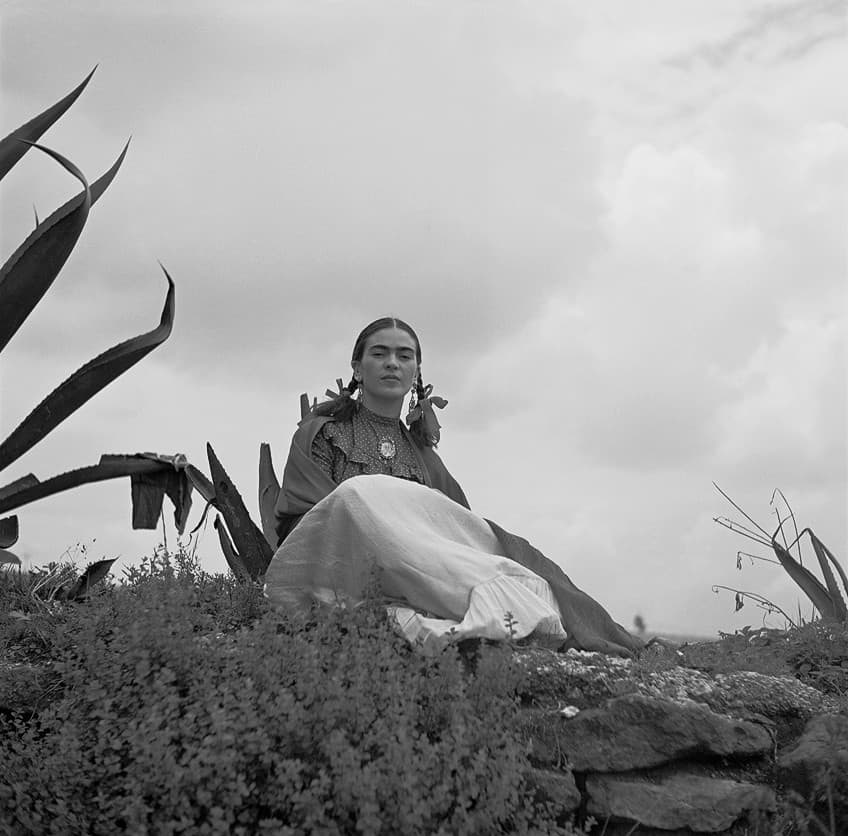
Facts About Frida Kahlo’s Paintings: Unveiling the Layers of Emotion and Symbolism
Frida Kahlo’s paintings are a testament to her unparalleled talent and profound emotional depth. Each brushstroke reveals layers of symbolism, personal narratives, and a raw honesty that continues to captivate art enthusiasts around the world. Exploring the facts about Frida Kahlo’s paintings provides valuable insights into the themes, techniques, and inspirations that shaped her iconic body of work. Here are ten compelling facts about Frida Kahlo’s paintings, each accompanied by a detailed exploration of its significance.
Profound Exploration of Pain and Suffering
Frida Kahlo’s paintings often delve into the themes of pain, suffering, and mortality. Her artistic expression served as a cathartic outlet for the physical and emotional anguish she experienced. Through powerful visual imagery, she confronted her own physical scars, medical procedures, and the fragility of the human body.
These introspective paintings resonate with viewers, evoking empathy and highlighting the universal nature of human suffering.
Symbolism as a Language of Expression
Symbolism played a vital role in Frida Kahlo’s paintings, allowing her to communicate complex emotions and narratives. She incorporated meaningful objects, animals, plants, and cultural references into her artwork, often drawing from Mexican folklore and mythology. These symbols added layers of meaning, inviting viewers to decipher the hidden stories and personal experiences embedded within each composition.
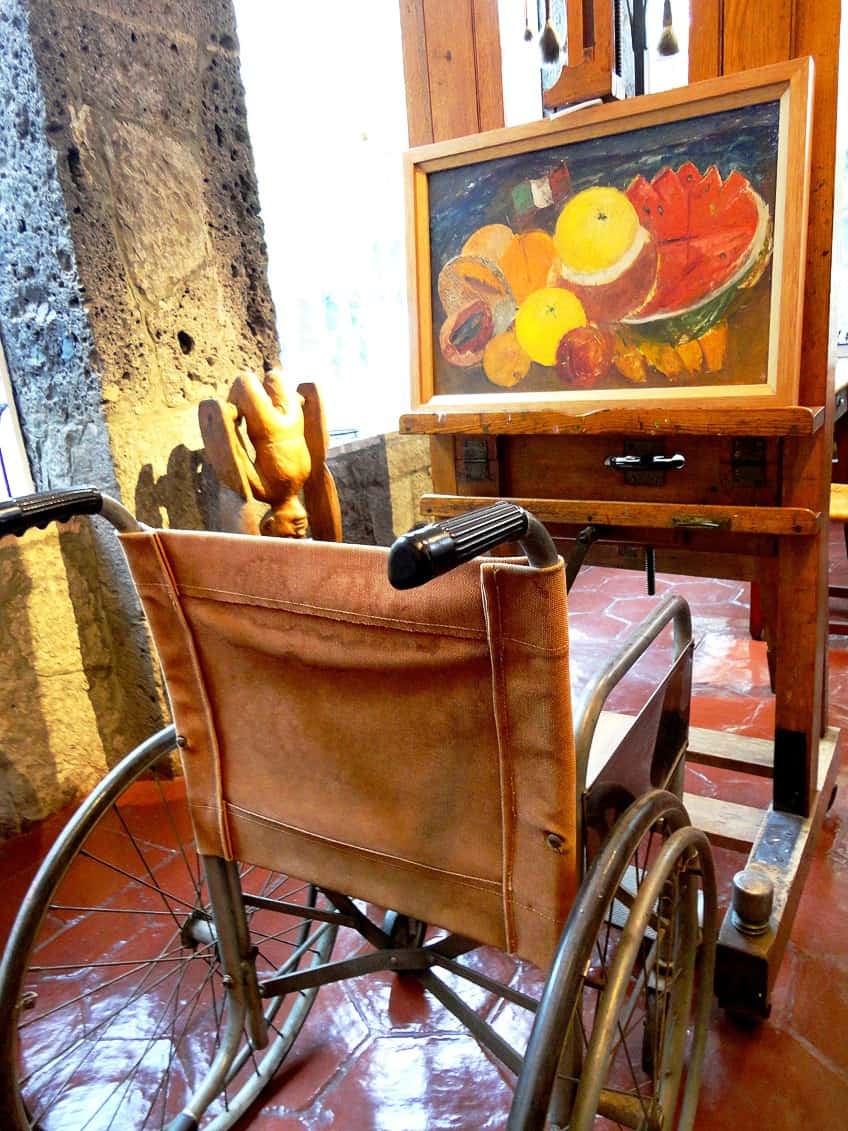
Fusion of Realism and Surrealism
Frida Kahlo’s paintings encompass elements of both realism and surrealism, blending the boundaries of the tangible and the dreamlike. While her works often feature meticulous attention to detail, she incorporated fantastical elements and distorted perspectives to create a sense of the uncanny.
This fusion of artistic styles adds depth and intrigue to her compositions, inviting viewers to explore the realms of both reality and imagination.
Capturing Intimate Moments and Relationships
Frida Kahlo’s paintings often capture intimate moments and relationships, providing glimpses into her personal life and the connections she shared with others. Her portrayal of her tumultuous relationship with Diego Rivera, her family members, and friends offers insight into the complex dynamics and emotions that shaped her existence.
Exploration of Gender Identity and Femininity
Frida Kahlo’s art explores themes of gender identity, femininity, and the societal expectations placed upon women. Her self-portraits challenge conventional beauty standards and present a powerful depiction of womanhood. Frida’s artwork celebrates the strength, resilience, and agency of women, ultimately inspiring generations of artists and feminists.
Raw Emotion and Introspection
Frida Kahlo’s paintings are imbued with raw emotion and introspection. Her art lays bare her deepest fears, desires, and vulnerabilities, inviting viewers to connect with their own innermost selves. Through her unflinching portrayal of her own experiences, Frida creates a universal language of empathy and understanding.
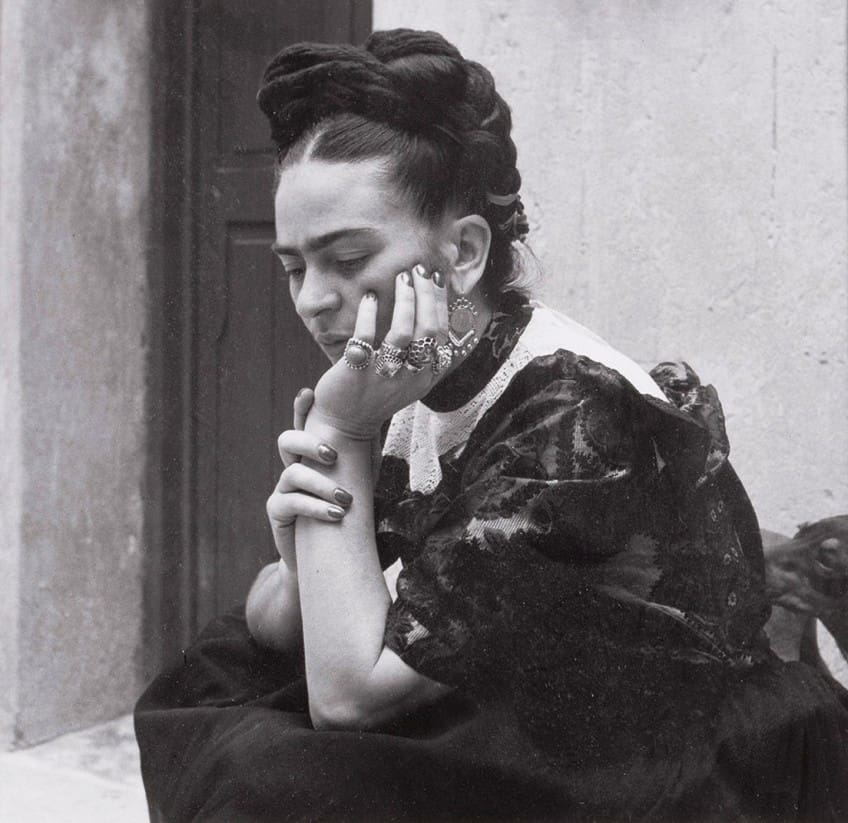
Legacy of Influence and Inspiration
Frida Kahlo’s paintings continue to inspire and influence artists, activists, and individuals around the world. Her bold artistic style, unapologetic expression, and fearless exploration of the human condition have left an indelible mark on art history. Frida’s legacy serves as a reminder of the transformative power of art and its ability to evoke emotion, challenge societal norms, and ignite social change.
In conclusion, delving into the fascinating world of the Mexican artist reveals a tapestry of facts about Frida Kahlo, ranging from her artistic brilliance to intriguing aspects of her personal life. Known for her iconic self-portraits and vibrant artistry, Frida Kahlo’s unique style and profound exploration of pain, identity, and cultural heritage have made her a celebrated figure in the art world. Her invincible liveliness and resilience continue to inspire generations, transcending the boundaries of time and physical challenges.
Frequently Asked Questions
What Was Frida Kahlo Famous For?
Frida Kahlo was famous for her iconic self-portraits, which depicted her introspective exploration of identity, pain, and passion. Her paintings were characterized by vibrant colors, symbolic imagery, and a raw emotional power that resonated deeply with viewers. Frida’s art was deeply personal, often incorporating elements of her Mexican heritage, mythology, and cultural symbolism. She became renowned for her ability to transcend physical and emotional suffering, using art as a means of self-expression and a medium to challenge societal norms. Frida Kahlo’s fame extends beyond her artwork; she is also celebrated for her defiance of gender norms, her unapologetic embrace of her own identity, and her role as an icon for feminist and LGBTQ+ movements. Her profound artistic legacy and influential contributions continue to inspire and captivate audiences worldwide today.
What Was Frida Kahlo’s Nickname?
Frida Kahlo did not have a special nickname. She was commonly referred to by her first name, which became synonymous with her artistic persona and legacy. In that sense, Frida Kahlo’s nickname was just Frida.
How Tall Was Frida Kahlo?
Frida Kahlo was approximately five feet and three inches (1.60 meters) tall. Her petite stature did not diminish the immense presence and impact that she had as an artist and cultural icon. Despite her physical challenges and pain, Frida’s artistic voice and indomitable spirit continue to tower over the art world today, transcending the limitations of height and leaving an enduring legacy that extends far beyond her physical stature.
Nicolene Burger, a South African multimedia artist and creative consultant, specializes in oil painting and performance art. She earned her BA in Visual Arts from Stellenbosch University in 2017. Nicolene’s artistic journey includes exhibitions in South Korea, participation in the 2019 ICA Live Art Workshop, and solo exhibitions. She is currently pursuing a practice-based master’s degree in theater and performance. Nicolene focuses on fostering sustainable creative practices and offers coaching sessions for fellow artists, emphasizing the profound communicative power of art for healing and connection. Nicolene writes blog posts on art history for artfilemagazine with a focus on famous artists and contemporary art.
Learn more about Nicolene Burger and about us.
Cite this Article
Nicolene, Burger, “Frida Kahlo Facts – Learn Everything About This Iconic Painter.” artfilemagazine – Your Online Art Source. October 23, 2023. URL: https://artfilemagazine.com/frida-kahlo-facts/
Burger, N. (2023, 23 October). Frida Kahlo Facts – Learn Everything About This Iconic Painter. artfilemagazine – Your Online Art Source. https://artfilemagazine.com/frida-kahlo-facts/
Burger, Nicolene. “Frida Kahlo Facts – Learn Everything About This Iconic Painter.” artfilemagazine – Your Online Art Source, October 23, 2023. https://artfilemagazine.com/frida-kahlo-facts/.



